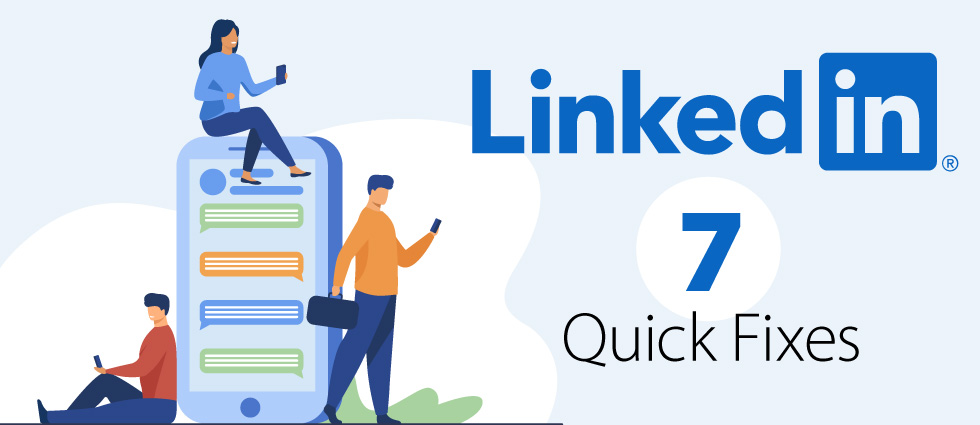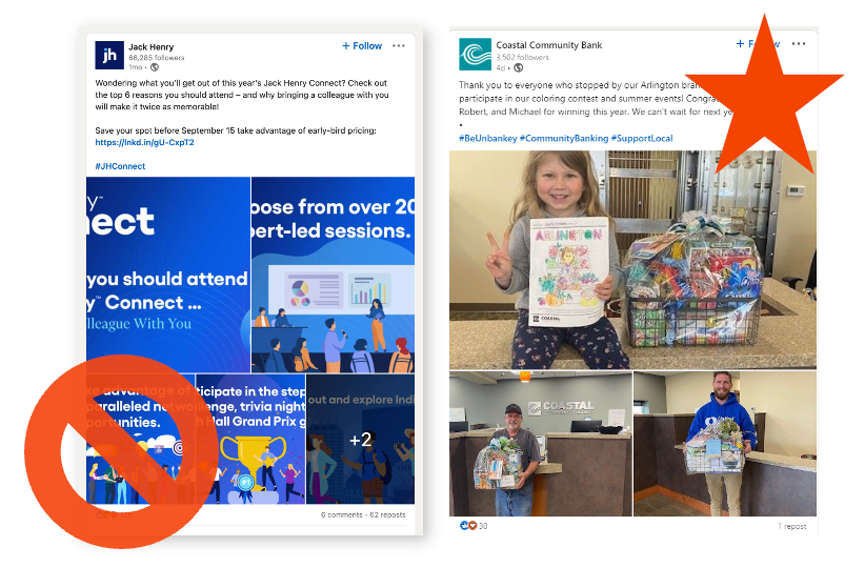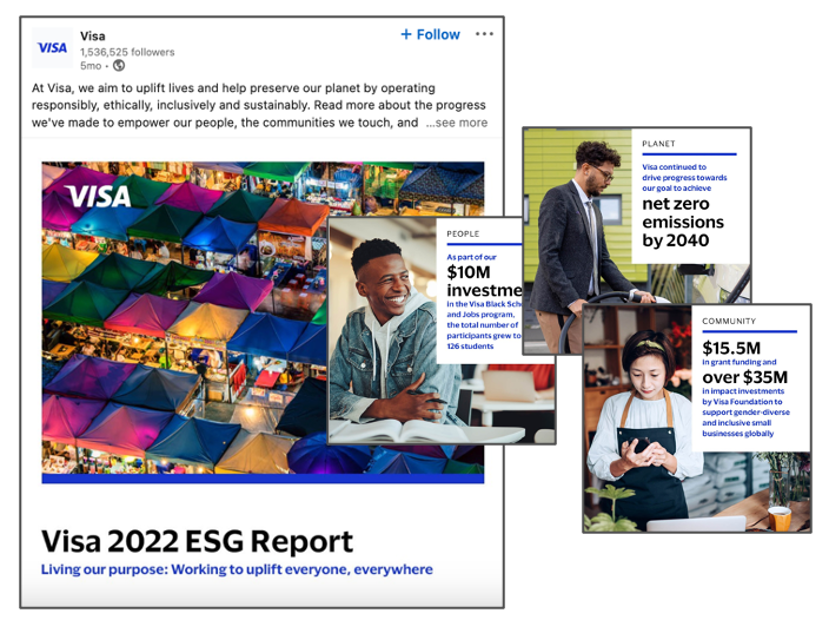7 Quick Fixes to Boost Organic Content Success on LinkedIn

LinkedIn turns 21 this year! The social media giant has changed dramatically since its May 2003 launch – evolving from a site dedicated to job searches to a powerful advertising and content marketing platform. Yes, hiring activities are still a staple on LinkedIn, but today you’re just as likely to encounter financial services influencers (“finfluencers”) and thought leadership.
Here’s why: According to LinkedIn’s pressroom, the platform has over 1 billion members, including 214 million in the U.S. Additional insights from Hootsuite show that these users are
- college-educated (53% of Americans with bachelor’s degrees say they use LinkedIn)
- high earners (with 2x the buying power of average online audiences)
- influential (4 out of 5 drive business decisions)
LinkedIn believes its members are also attractive to financial brands in other ways. Specifically, the company says its audience is engaged and “seeking trusted financial information, indexing 2x interest over other platforms.” It also reports,
- “47% of members say the platform is a strong fit for savings and investment product information, compared to a 22% average for other social media platforms.”
- “68% of LinkedIn members find content about ‘ways to improve my finances’ valuable, compared to 45% for members on other platforms.”
With LinkedIn producing “the best organic results,” according to 77% of content marketers, organic content on your LinkedIn company page represents an opportunity to reach a valuable, interested audience.
We recommend defining your goals, building a LinkedIn-specific content strategy and optimizing your content for the platform. As you do so, these organic LinkedIn content tips will help you make the most of your efforts.
7 Tips for Organic Content on LinkedIn
1. Post regularly.
Data shared by Hootsuite shows that LinkedIn pages posting weekly experience 5.6X the follower growth of pages that post less frequently. This organic content gives LinkedIn members a reason to follow your page and should educate, entertain or inform – in other words, provide value to your audience. Save promotional content for your paid strategy, and instead share opportunities, build community and publish thought leadership that addresses audience pain points.
Developing an editorial calendar will help you plan for high-quality content. (We’ve included some topic ideas below.)
2. Include compelling visuals.
Aesthetics matter. Great visuals grab attention and represent your brand. Prioritize photos and videos of actual team members, colleagues and customers, and avoid stock imagery.
We also recommend being cautious when posting multiple photos. LinkedIn’s multi-photo “collages” often result in awkward crops on your photos, removing their appeal and sometimes rendering them indecipherable.

3. Give your post copy lots of love.
Give your captions some love: Include keywords, hashtags and mentions of organizations and individuals, and test both punchy one-liners and more in-depth captions. In addition, structure your copy strategically: Start with a brief hook, provide compelling details and end with a call to action (CTA).
4. Publish “document” posts.
One of the most popular post types on LinkedIn is a document post – a post that mimics a carousel. This is achieved by uploading a multi-page PDF, which members can click through slide-by-slide.

5. Experiment.
Test various post types (like native videos and documents, as noted above) to see what resonates with your followers and others your content reaches. We recommend trying zero-click content (posts that keep members on LinkedIn vs. linking off to other sites), as well as LinkedIn features like polls, articles, newsletters, events and LinkedIn Live.
6. Encourage employee advocacy.
Some of the most engaging thought leadership content on LinkedIn comes from your employees. Give them the guidance and resources they need to add their voices to the organic content you’re creating.
7. Promote your page.
Get the word out about your page by promoting it in your website footer, email signatures and other social platforms. In addition, complement your efforts with LinkedIn’s paid options (like boosted posts and follower campaigns) to extend the reach of your organic content and build community and momentum.
Bonus tip: Be sure to fill out your profile completely and correctly.
According to LinkedIn, company pages with complete information get 30% more weekly views. This means filling in all relevant fields and sizing visual elements (like profile pics and cover/header photos) appropriately.
Popular Organic Content Topics for LinkedIn
One common concern we hear from clients who are just getting started on LinkedIn is not having enough to post about, but once we brainstorm with them, they realize how many content opportunities they actually have. To help you dig into the content possibilities for your organization, consider this list of topics that resonate with audiences on LinkedIn:
- Company culture – Highlight your team via employee profiles, staff recognitions, new hires and promotions. Go deeper and tell your story, including team members’ passion for the work, what it’s like to work there, tours of sites and facilities and favorite perks.
- Customer stories – Put a fresh spin on customer reviews and client testimonials with photos and videos.
- Thought leadership – Post tips, FAQs, Q&As, how-tos and more by repurposing existing content assets like papers, reports, case studies, research, etc.
- Products and services – It *is* possible to create organic posts on products and services. The angle makes all the difference. Instead of salesy copy, talk about problems and solutions (your solutions) or give tips for getting the full benefit from your services.
- Conversation starters – Share some context on topics that people in your industry debate or love to dig into, and then ask a question to invite others into the conversation.
- Newsjacking – Monitor trending news and popular online conversations for topics that are relevant to your company and industry. While it’s on everyone’s mind, contribute a POV or resource.
- Company news – Share your good news, like awards, event and conference participation, growth and milestones, media coverage, product launches, etc.
- Observances – When cultural or social observances resonate strongly with your team or your customers and prospects, post about awareness days, commemorations or holidays. We recommend only doing so when you have an authentic, meaningful connection to the observance.
Header includes an image by pch.vector / Freepik









